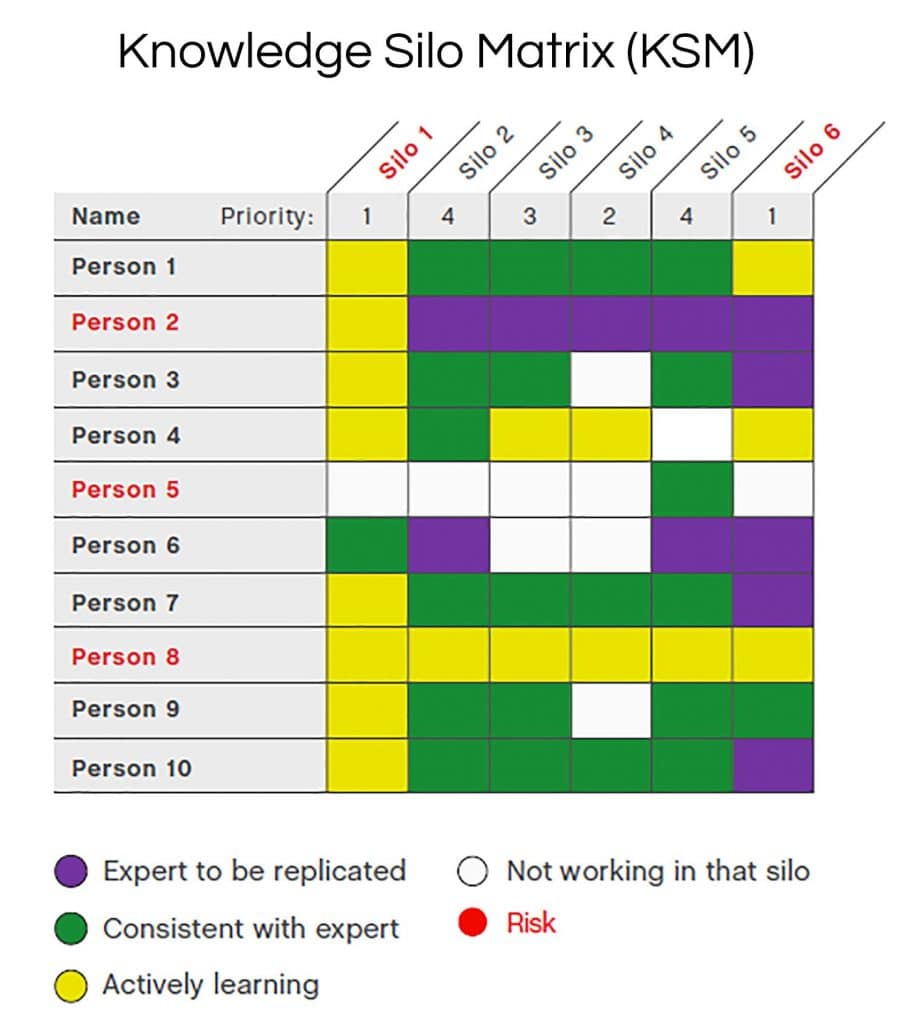Using Content to Retain Knowledge Within Your Business
October 1, 2021
Given the aging workforce in the United States, an employee nearing retirement may be the first thing that comes to mind when you think of losing knowledge within a business.
Truth is, knowledge can walk out the door at any time, leaving an organization scrambling to rebuild a key position to what it once was. Tweet this
Businesses that proactively plan the transfer of knowledge for key positions reap benefits beyond a faster recovery from an unexpected employee loss, including:
- Better onboarding for new hires
- Overall increase in productivity
- Faster ramp-up during employee transfers or promotions
- Time freed up for busy subject matter experts as knowledge is transferred down
- Identification of skill gaps or redundancies as they look to replicate the best and brightest across the organization
There are a variety of ways to share business knowledge, from less-formal tactics such as mentoring and job shadowing, to using technology to capture employee knowledge, to more purposeful programs that identify and document certain practices.
Regardless of the chosen method for knowledge transfer, information gleaned can only be shared and useful for the future if it is recorded, and that is where content comes into play.
Turning Content Into Shareable Knowledge
As with most successful activities within a business, achieving effective knowledge transfer requires a plan. While the process will vary some for every business, it should include the basic steps of identifying what to capture, how to document it, how to gather it and where to share it.
1. Identify Knowledge to Capture
Some areas of greatest priority for knowledge transfer may be obvious, such as the case of planned retirements, while others may take more digging to determine.
To help identify knowledge to document and transfer, take a look at:
- Key subject matter experts
- Employees nearing retirement
- Company goals and the generational “backlog” to achieve them
- Profit-driving products and processes within the business
- Fast-growing departments
- Silos and one-person areas of expertise
The knowledge transfer consultants at The Steve Trautman Co. use a matrix that helps organizations analyze their available knowledge and understand which areas are most at risk of being lost.
“Our Knowledge Silo Matrix helps the organization ask its managers who does what best,” says Sonja Gustafson, director of marketing. “From the examination of these key experts will arise skillsets that may need to be transferred.”

Image courtesy of The Steve Trautman Co.
Businesses may also consider soliciting employee questions to identify key knowledge gaps. If you already have an employee Q&A, forum or blog mechanism in place, scouring it can offer a wealth of ideas for knowledge that may need to be more formally captured.
2. Determine Best Content Format
There is good news and bad news when it comes to content. On the bright side, the choices are plentiful, but on the other hand, that can make more difficult the job of choosing a medium.
Consider this list of some popular content types in today’s workforce:
- Blogs
- Case Studies
- Ebooks
- FAQ Lists
- Fliers
- Online Forums or Q&As
- Podcasts
- Presentations
- Training & Procedures Manuals
- Videos
Further complicating the matter is that there is not necessarily one solution: A mix of content is often the most effective way of communicating with a diverse staff.
The key here is considering the type of information and with whom it is being shared. Think about factors such as:
- How employees prefer to learn
- Whether information is time-sensitive or quickly outdated
- Generational differences of the workforce
- How to make information digestible
- Whether the workforce is off or onsite
- How frequently and quickly information will need to be referenced
- The technology available to employees
- Whether the physical work environment is conducive to alternatives such as audio and video

3. Gather Knowledge
Once the “who” to include and “what” to do with it is determined, next comes the “how” to get knowledge out of the heads of subject matter experts and into a useful format.
Here are four content-driven methodologies to consider for documenting knowledge:
- Use of employee-driven technology: There is no shortage of tools available to help capture information from employees, from social-based sites such as Facebook Workplace, to custom intranet solutions, to robust software applications like these. While this may seem like an obvious and straightforward option, relying on employees to adopt such practices in a consistent and meaningful way is no easy endeavor, so be prepared for an ongoing effort to encourage use and participation.
- Conducting interviews: Businesses can look to writers inside or outside of the organization to conduct interviews that can be documented and turned into useful content. Placing the task with individuals who enjoy and have a knack for writing can give you more control over the process, providing for smoother task completion and better content quality.
- Tasking experts and trainees: At The Steve Trautman Co., consultants have found pairing an expert with a trainee and tasking the trainee with documentation to be most effective, as this protocol places less burden on a busy subject matter expert while putting the responsibility of skill development into the hands of those who need it.
- Curating from existing material: Many businesses have a plethora of data sitting on drives, in online forums or applications, and within employee manuals. While it may not be as comprehensive as needed, it could be a good place to start documentation.

4. Store & Share Knowledge
Here is where the hard work to document knowledge pays off – the sharing of content and reaping of the benefits.
Where content resides will depend on the chosen format and the communications framework established within the organization. Online intranets and network drives are popular, but some content types and business environments may require printed materials.
Whatever your chosen content combination, knowledge transfer efforts are wasted if information is not accessible and properly communicated.
Some ideas for storing, sharing and repurposing content to get the most “bang for the buck” include:
- Do not forget to tell (and remind!) employees the content is available, and where
- Post it on an intranet or network drive
- Consider multiple uses – i.e., can a video be transcribed into an online blog, can an ebook be broken apart into smaller pieces and used another way
- Use it for in-house training and webinars
- Feature popular subjects in employee newsletters and communications
- Insert key pieces into the employee on-boarding process
- Make it highly searchable with keywords and a table of contents, where applicable
- Use employee forums and Q&As as a source for future content ideas, then repurpose the information into other usable formats such as ebooks, fliers and FAQs
Knowledge Transfer Best Practices
The practice of transferring knowledge within a business can be overwhelming. The Steve Trautman Co.’s Gustafson offers a few parting words on putting it to use effectively:
- Do not make it up as you go along – having a plan and a process is critical
- Aim to use verbs and action words in content, especially where goals are concerned
- Set deadlines within the plan so steps can be met without overwhelming content contributors































